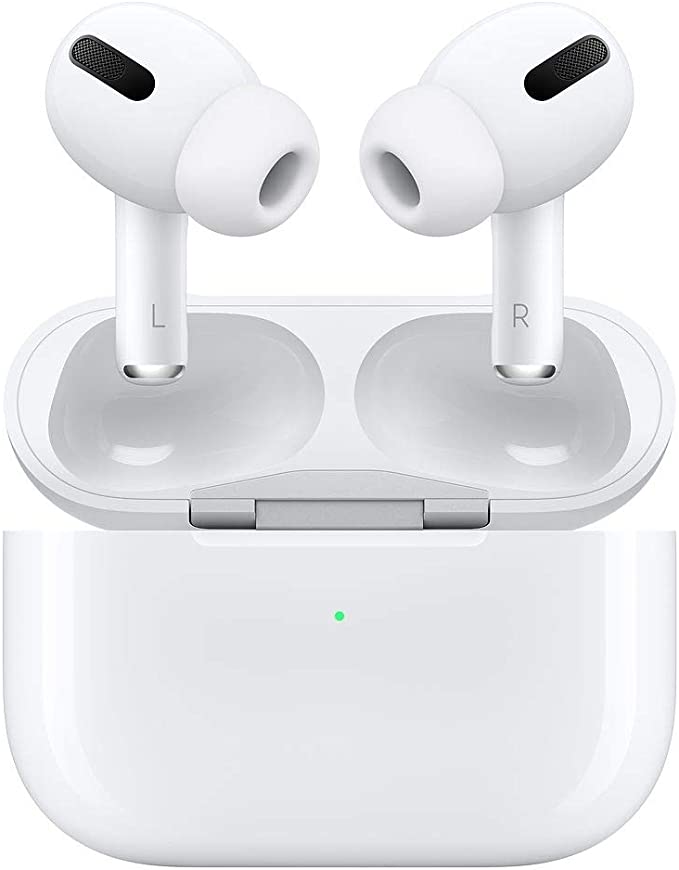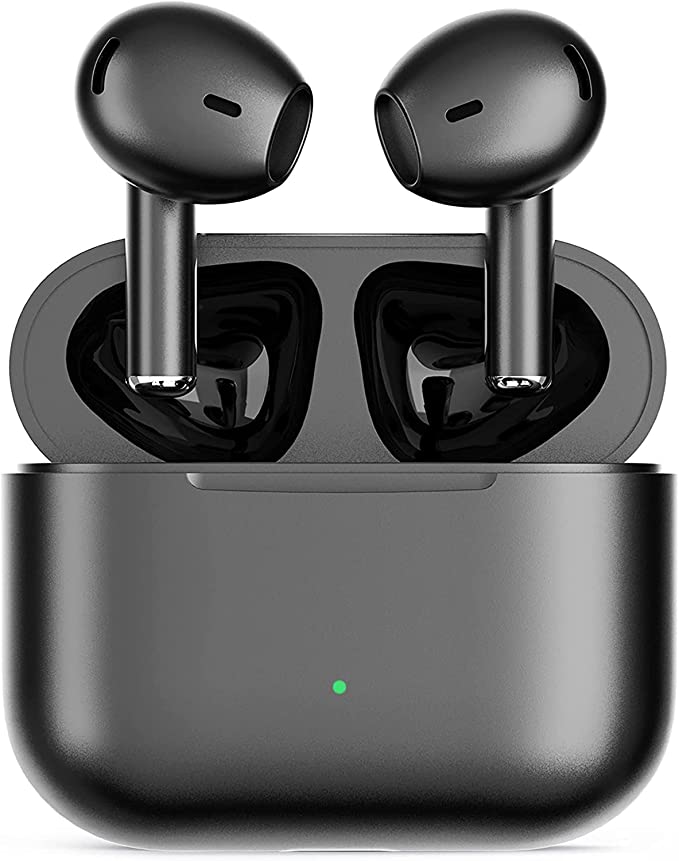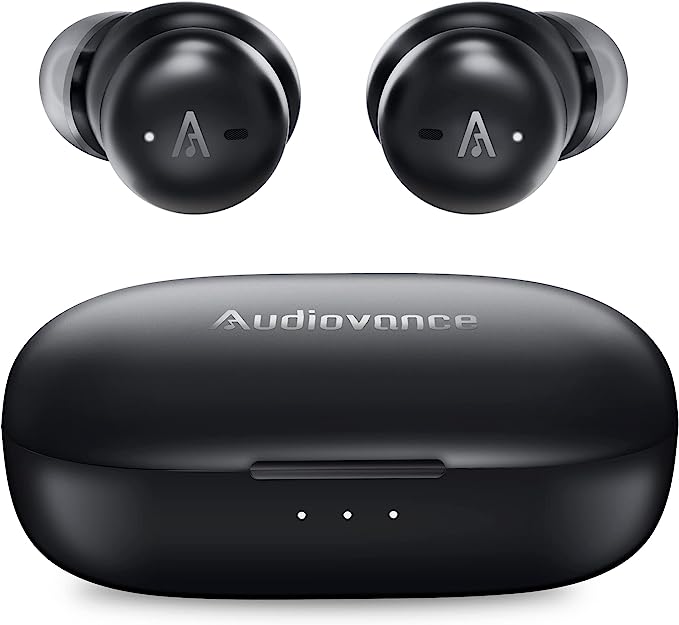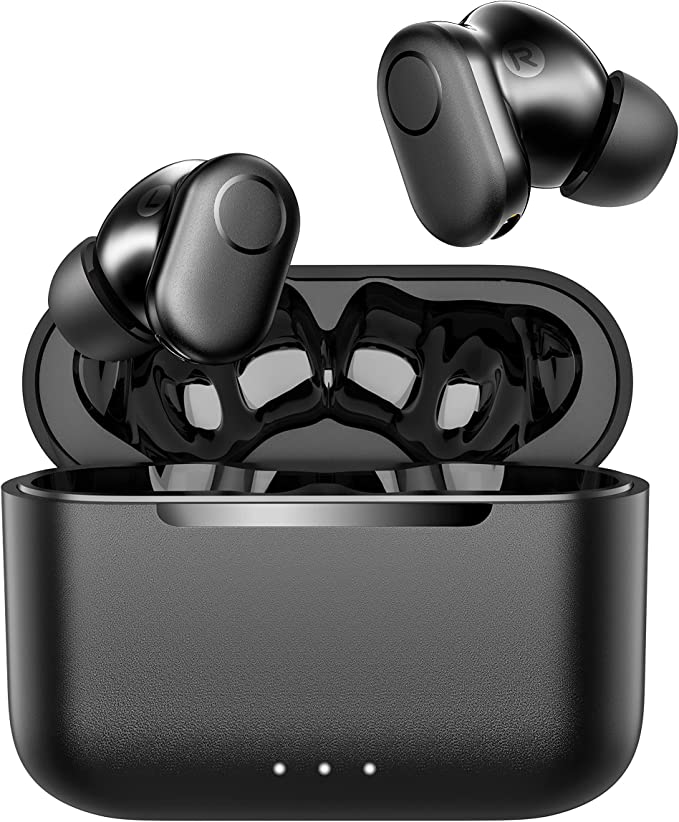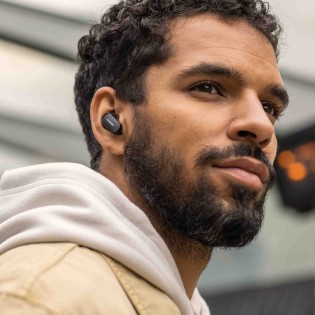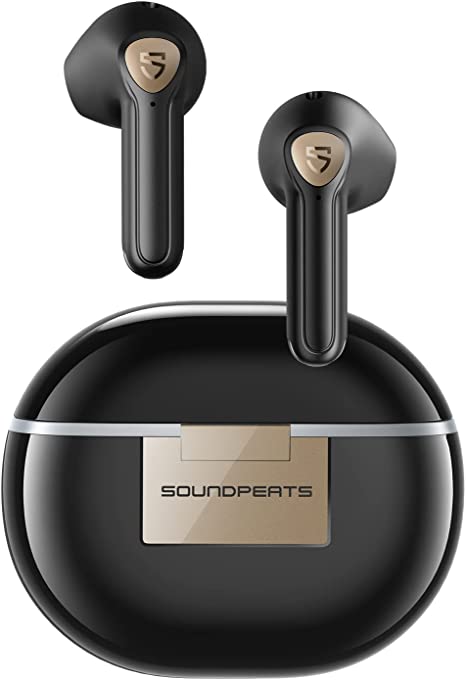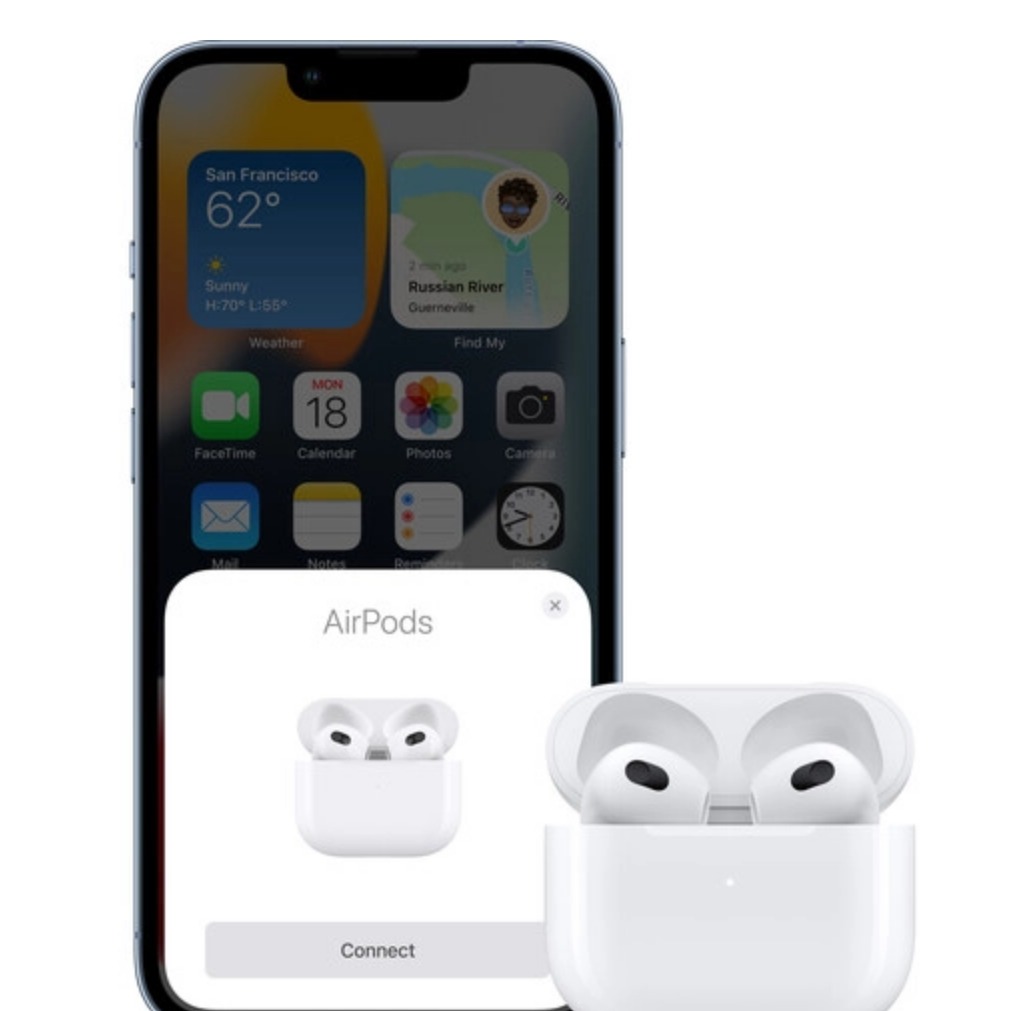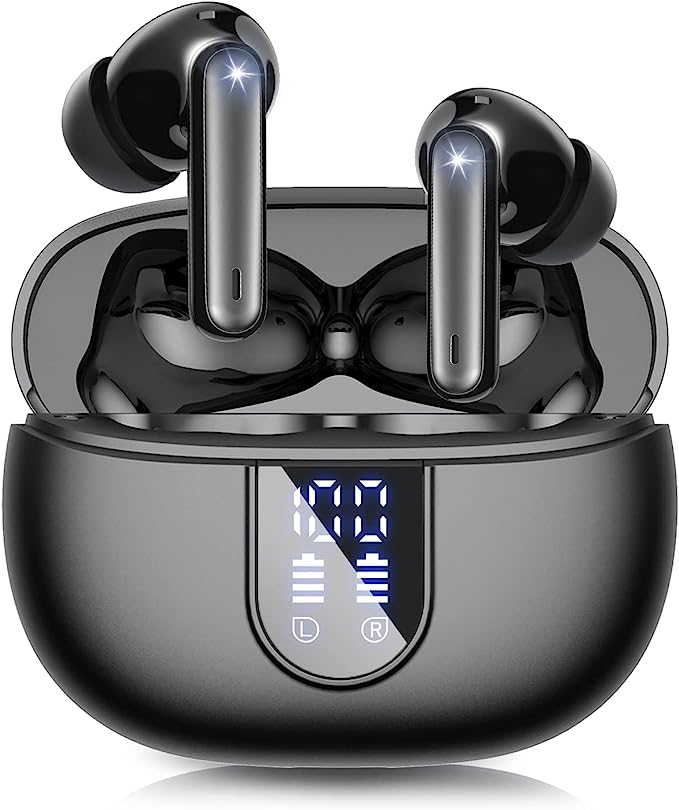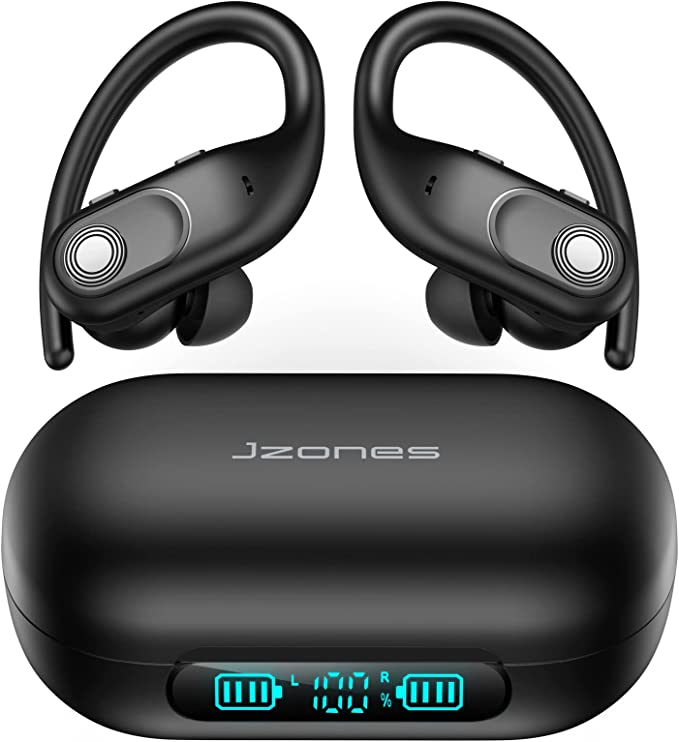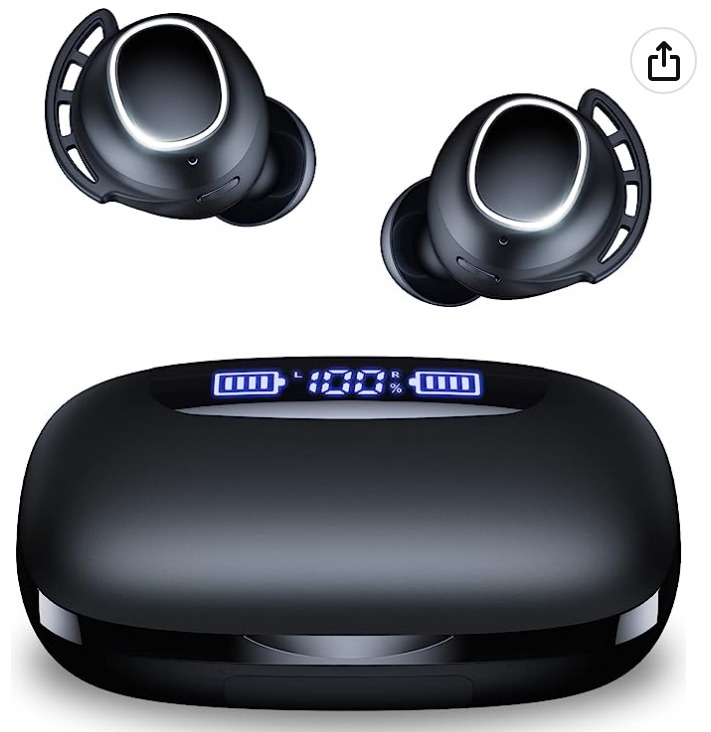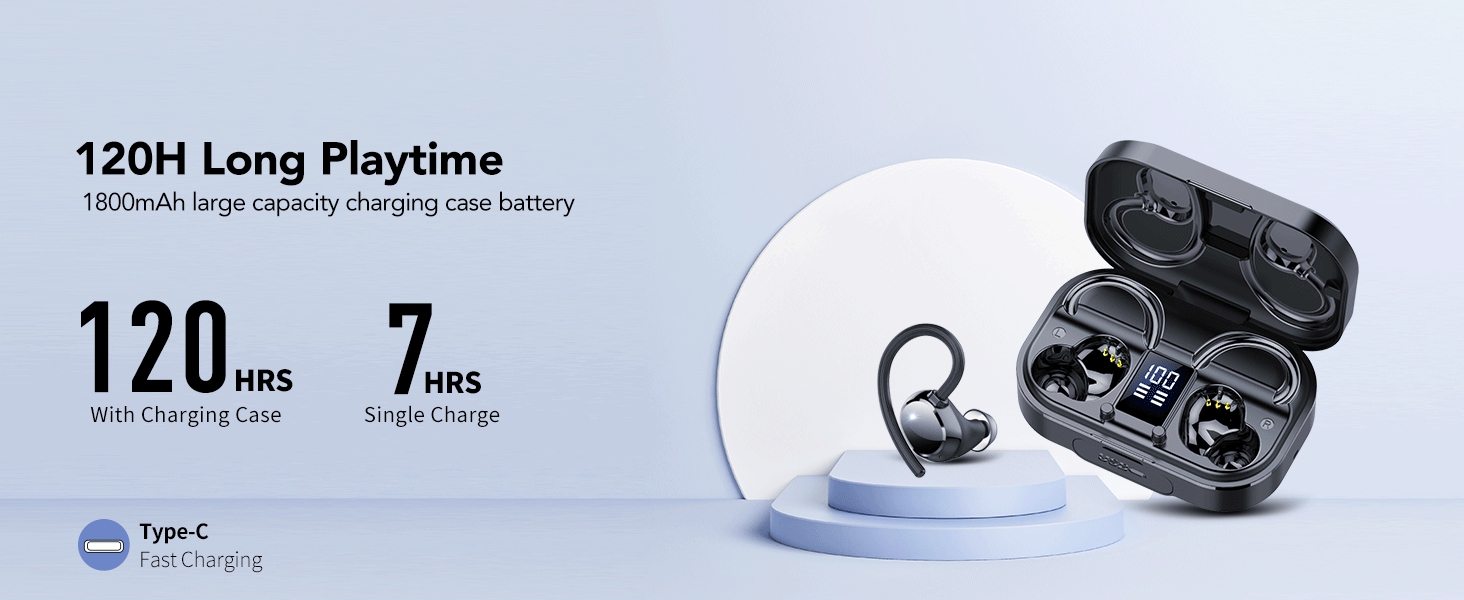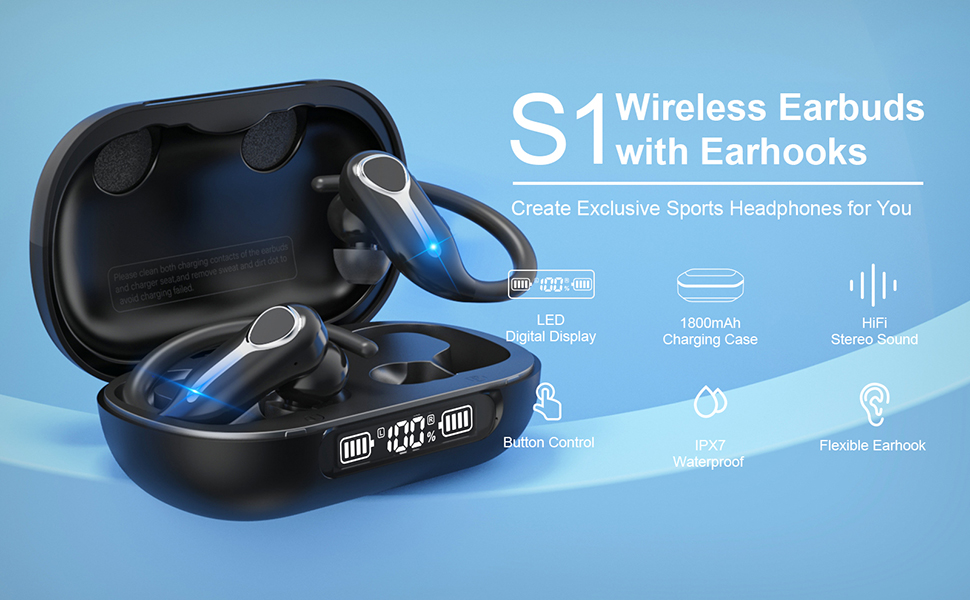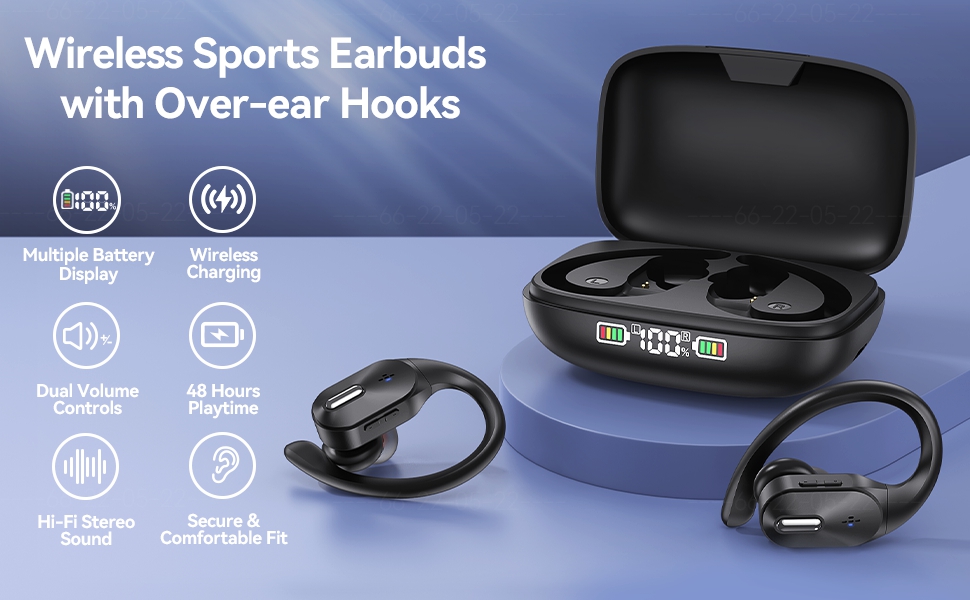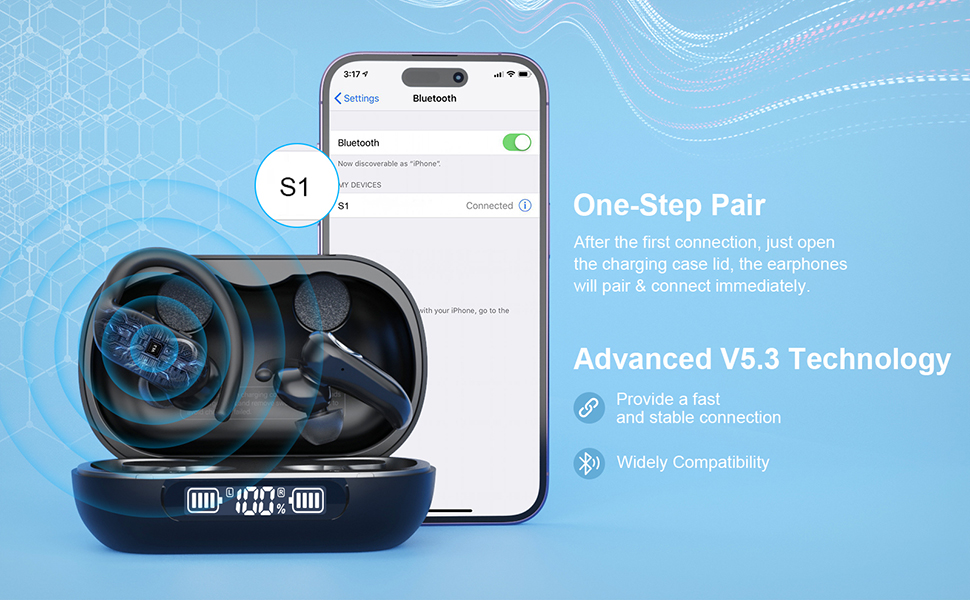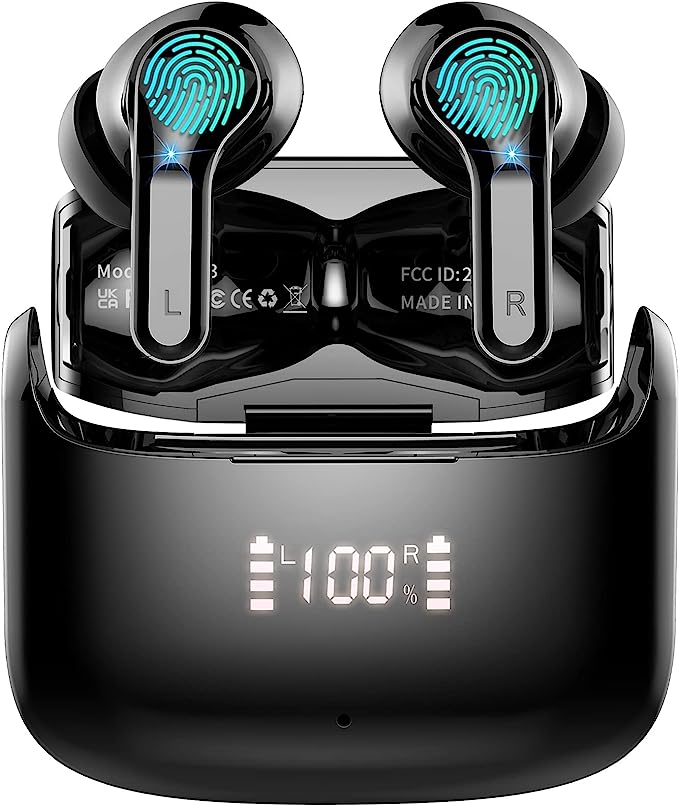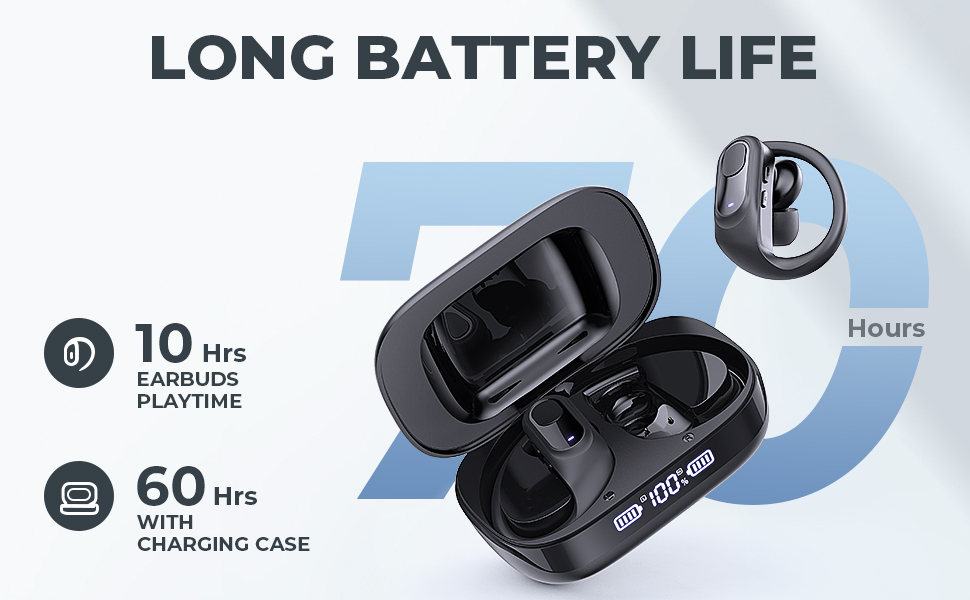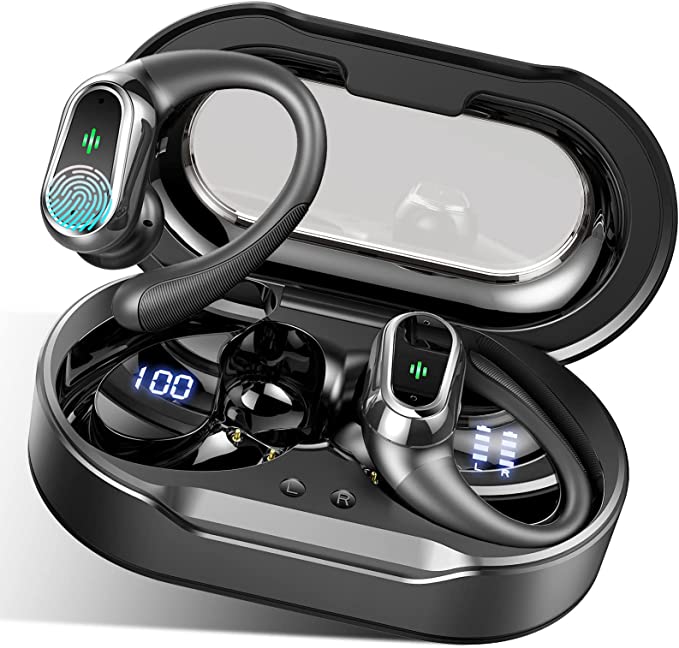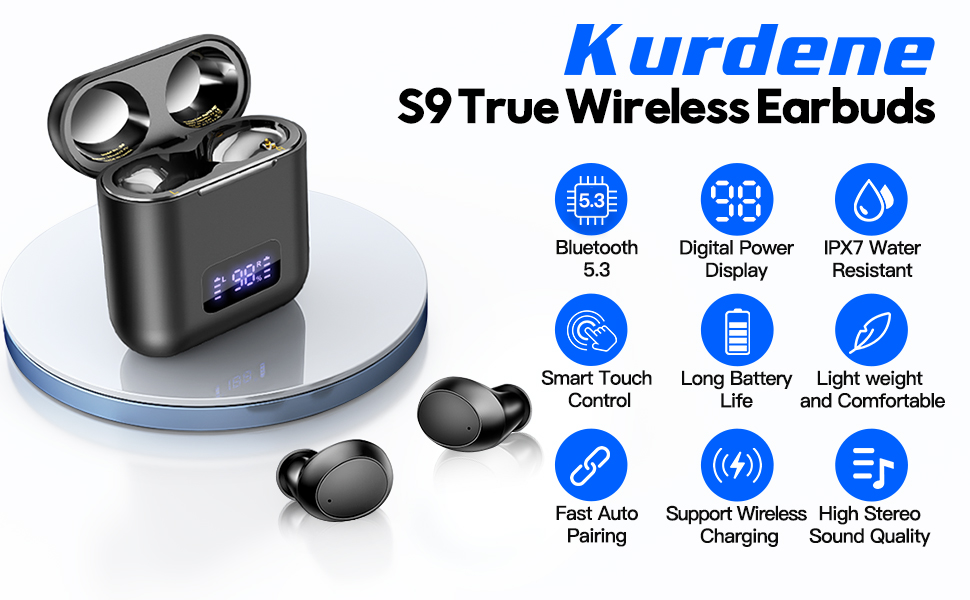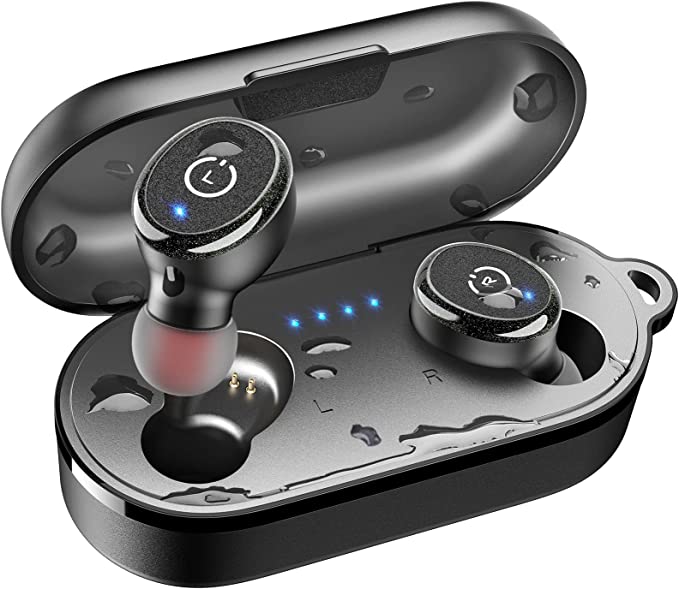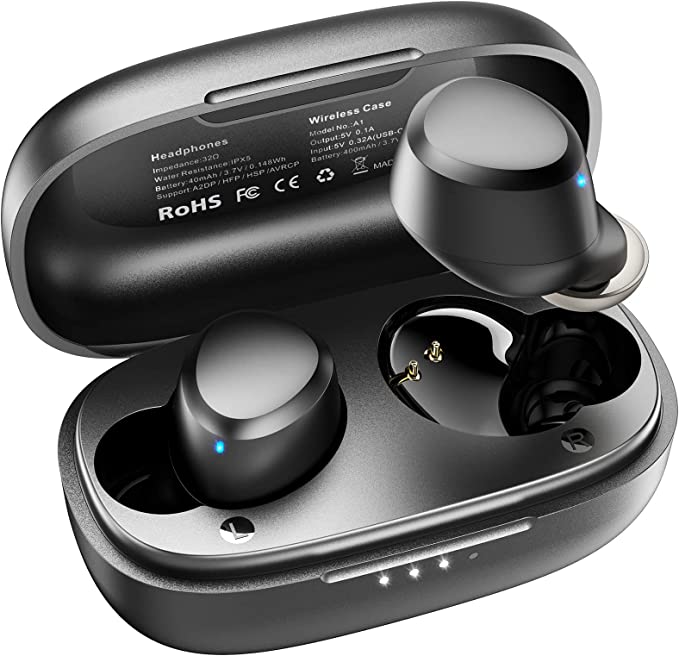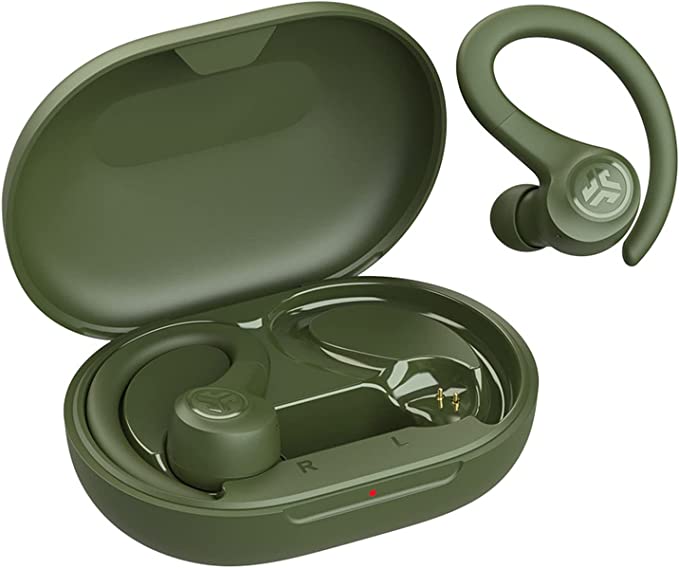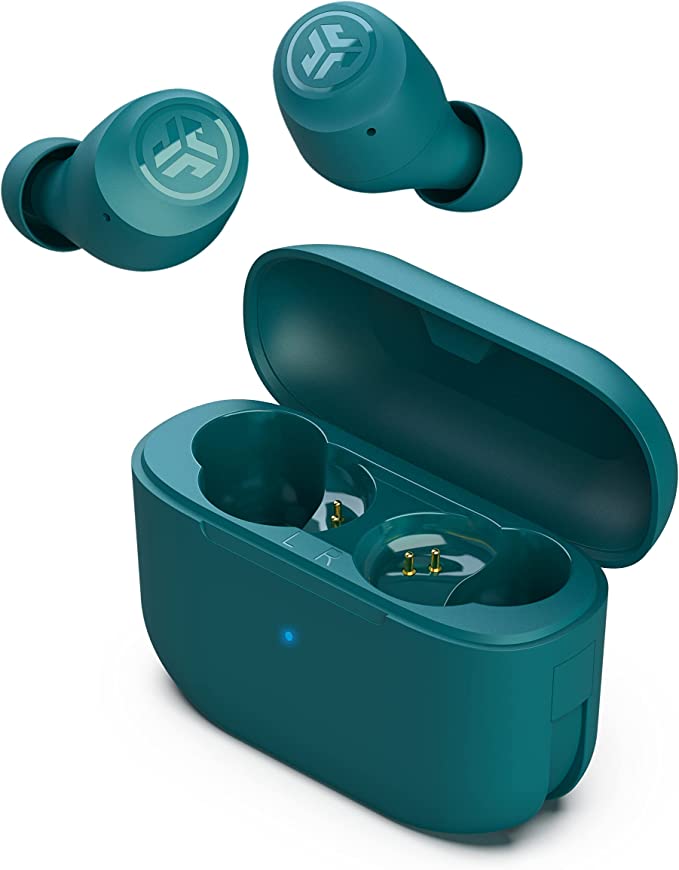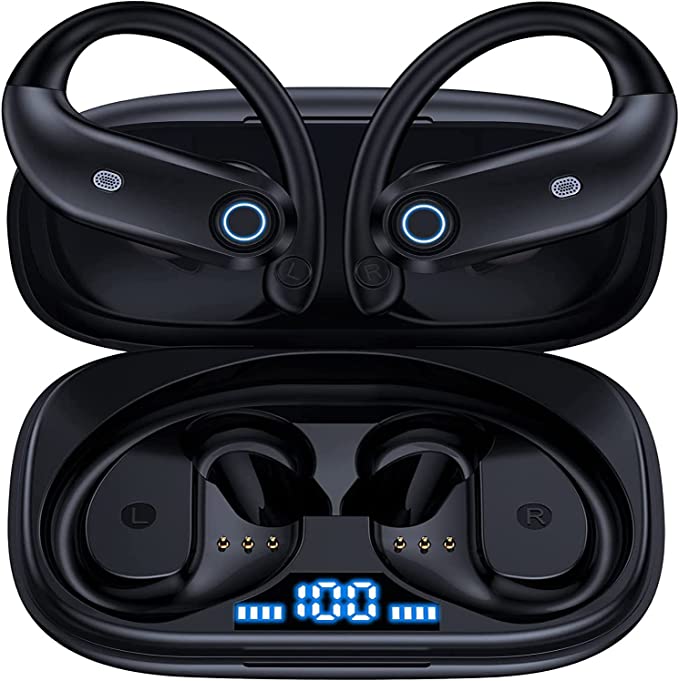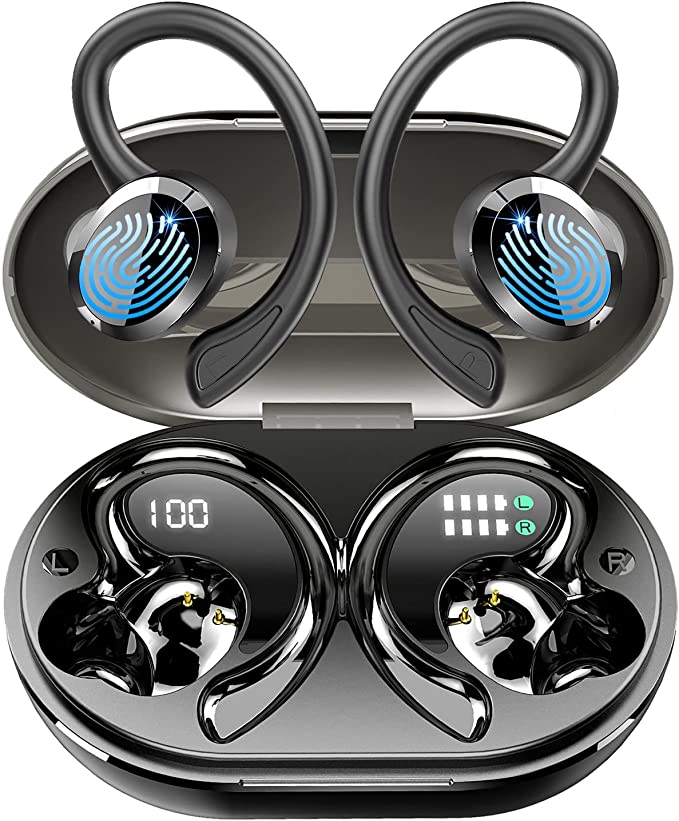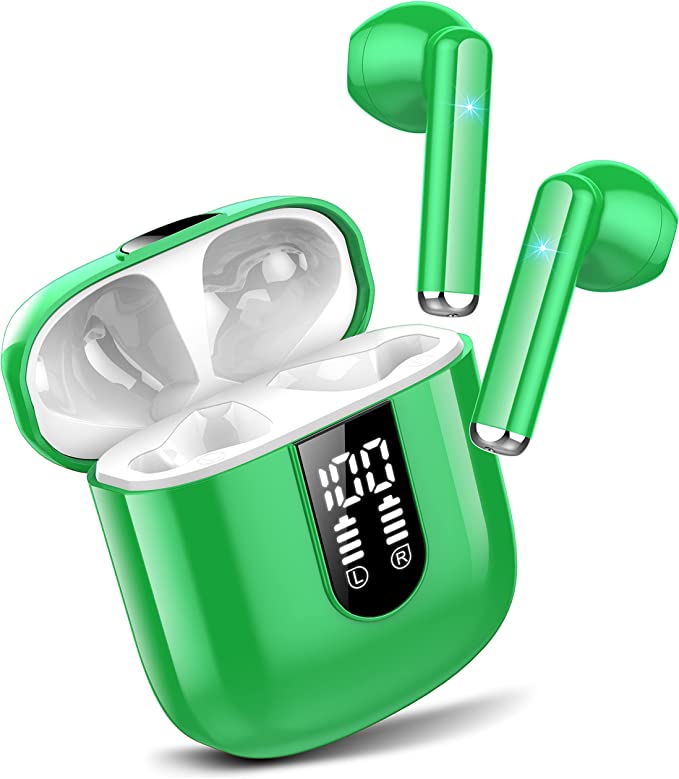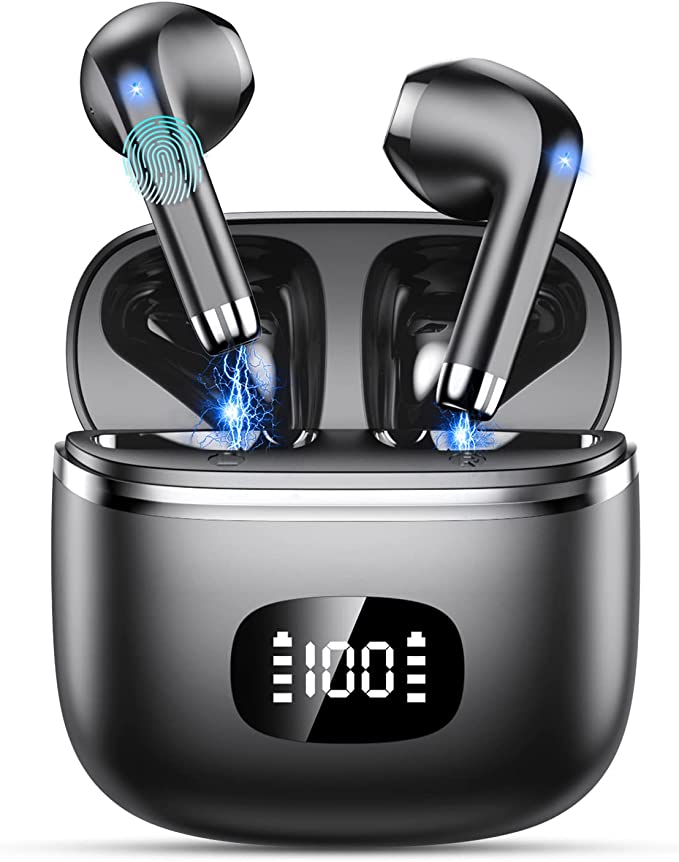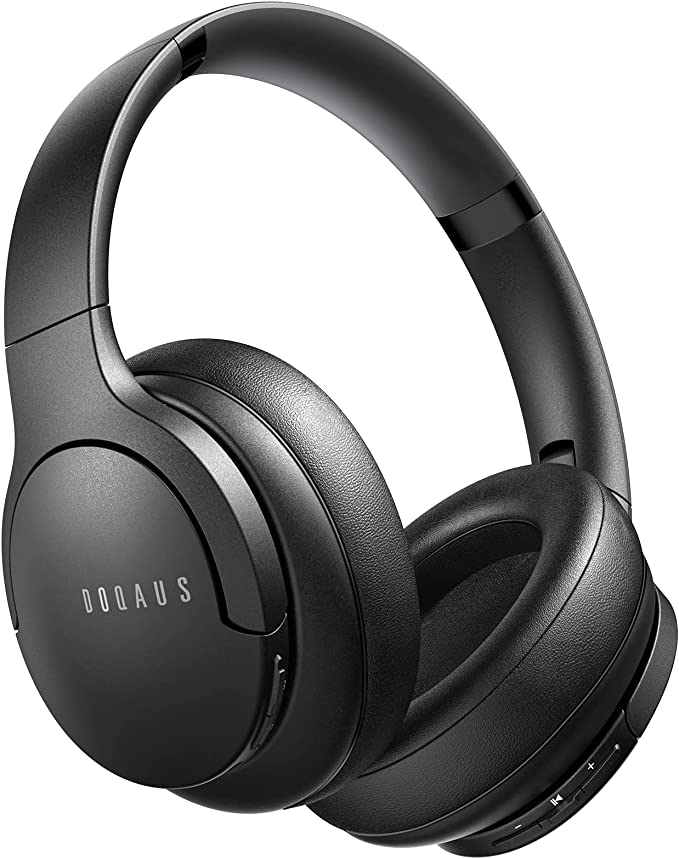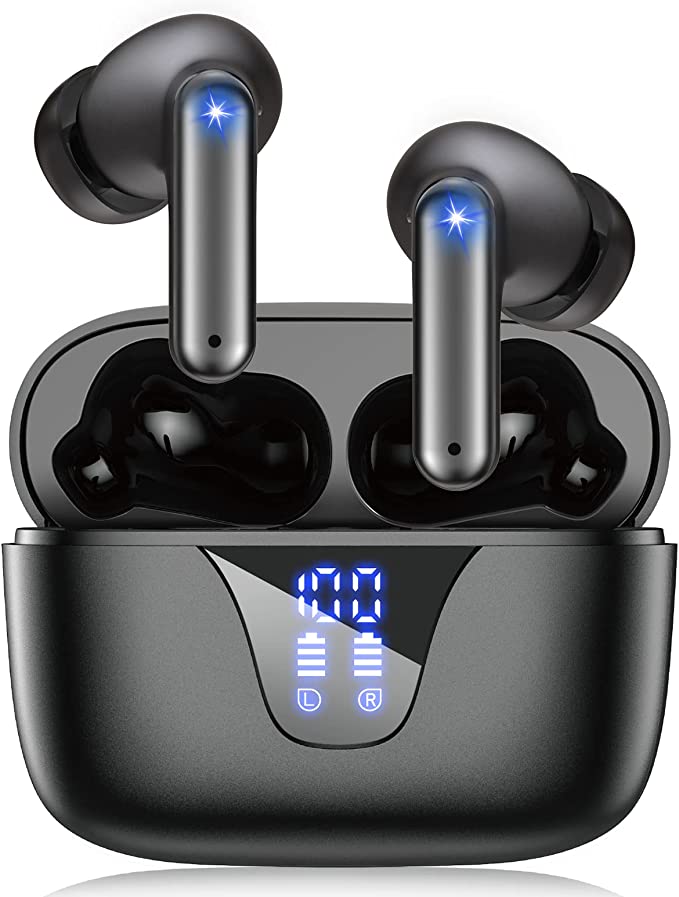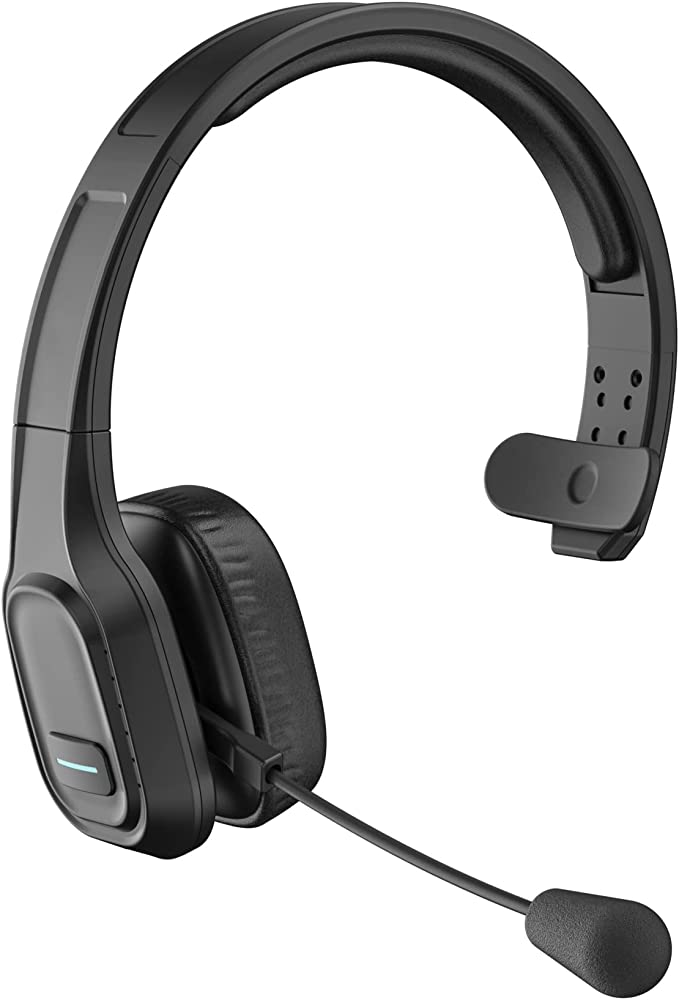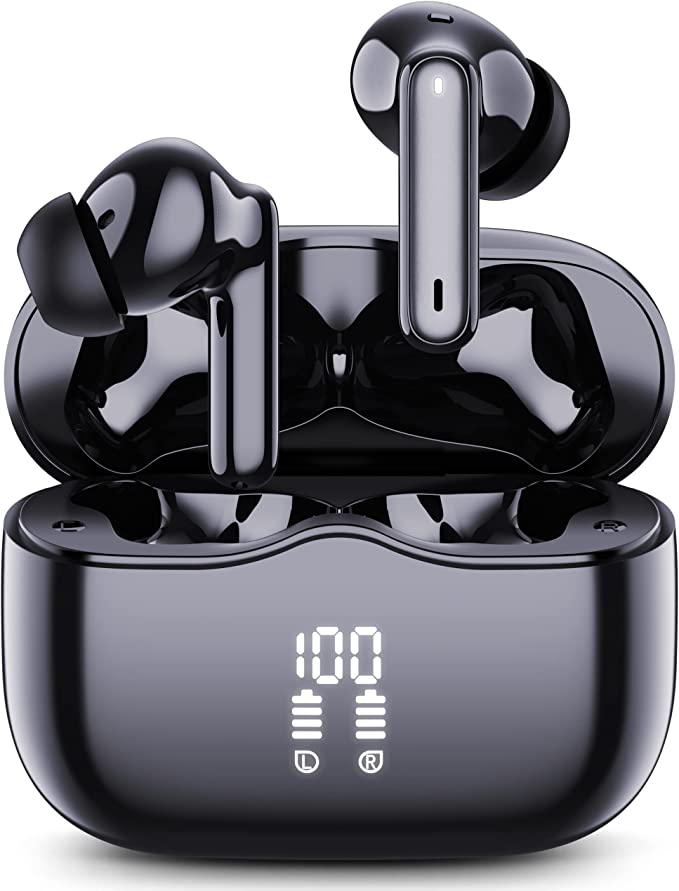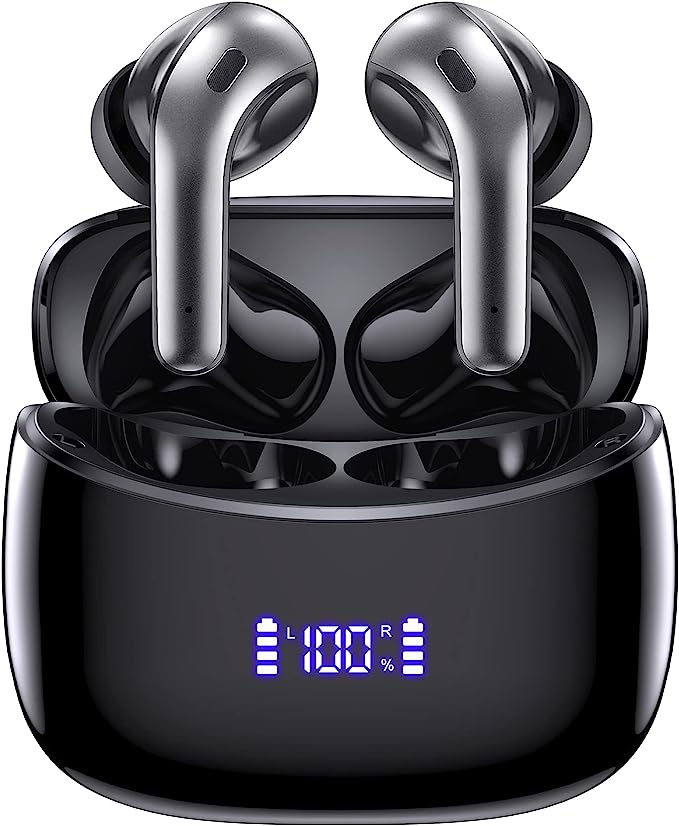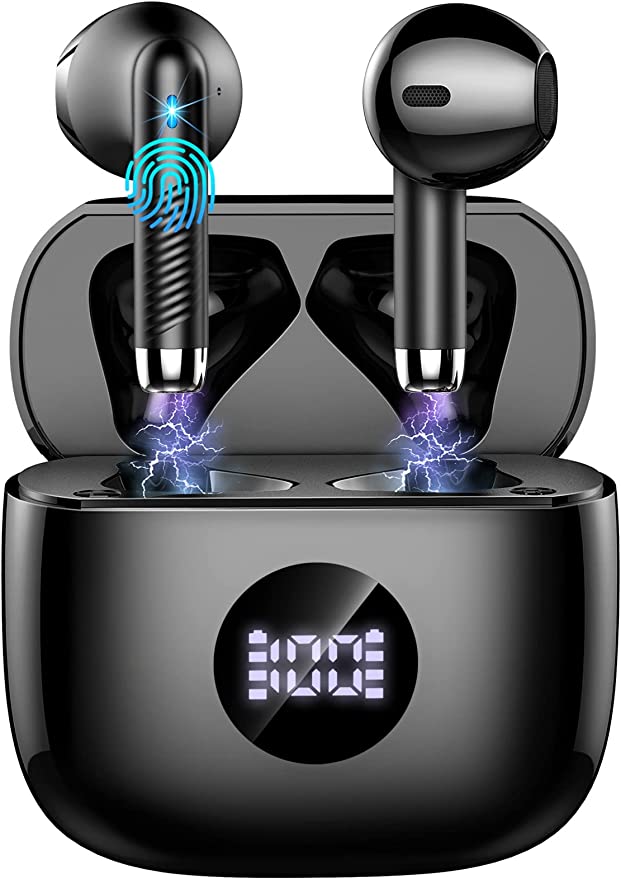UMIDIGI Ablebuds Free Wireless Earbuds: Hybrid ANC Earbuds That Won't Break the Bank
Update on May 30, 2025, 5:57 a.m.
Our modern lives are a symphony of sounds, often beautiful, but just as frequently, a cacophony. The rumble of morning commutes, the incessant chatter of an open office, the hum of household appliances – noise, it seems, is an ever-present companion. This constant barrage isn’t just an annoyance; it can fray our nerves, shatter our focus, and diminish our enjoyment of the audio we do want to hear, be it music, podcasts, or important conversations. Humanity has an innate yearning for auditory clarity, a desire for our own personal soundscape. What if technology could offer us a key, a way to selectively mute the clamor and unlock a world of pure, immersive sound? This is where the UMIDIGI Ablebuds Free step onto the stage, promising not just to play audio, but to intelligently sculpt our listening environment through the power of science.

The Magic of Silence: Diving Deep into Hybrid Active Noise Cancellation
At the heart of the UMIDIGI Ablebuds Free’s promise of tranquility lies their Hybrid Active Noise Cancellation (ANC) technology, engineered to reduce ambient noise by a significant 45 decibels (dB). But how does this seemingly magical feat of silencing the world around you actually work? It’s a fascinating blend of physics and sophisticated engineering.
First, let’s demystify “noise.” Scientifically, sound travels as waves, characterized by properties like frequency (pitch) and amplitude (loudness). Noise, in essence, is simply unwanted sound. Traditionally, we’ve fought noise with passive noise cancellation (PNC) – think of thick earmuffs or well-sealed earplugs. The snug fit of the Ablebuds Free, achieved with their silicone eartips, provides a degree of this “physical defense,” naturally dampening some external sounds simply by blocking their path to your eardrum. This is akin to closing a window to reduce street noise.
Active Noise Cancellation, however, is a far more dynamic and intelligent adversary to unwanted sound. It operates on a remarkable principle known as destructive interference. Imagine a sound wave as a series of peaks and troughs. If you can generate another sound wave that is the precise mirror image of the first – where its peaks align with the original’s troughs and vice-versa – the two waves will effectively cancel each other out, resulting in silence or significantly reduced sound. This is the “anti-noise” that ANC systems create. It’s like a sophisticated form of sonic judo, using the energy of the incoming noise against itself.
The “Hybrid” in Hybrid ANC, as featured in the Ablebuds Free, signifies a sophisticated dual-microphone system on each earbud working in concert:
- A Feed-Forward (FF) microphone is positioned on the exterior of the earbud. Its job is to “listen” to the ambient noise in your environment before it reaches your ear. This captured sound is then rapidly analyzed by an internal chipset.
- A Feed-Back (FB) microphone is located inside the earbud, closer to your ear canal. This microphone monitors the sound that actually makes it past the passive seal and the initial anti-noise wave generated based on the FF microphone’s input. It’s like an internal quality control check.
This two-pronged approach is powerful. The FF microphone tackles the noise from the outside, while the FB microphone fine-tunes the anti-noise signal, correcting for any residual sound that might have slipped through or nuances specific to how the earbud fits in your unique ear. The Ablebuds Free utilize a 3-microphone system in total per side (these two for ANC, plus one typically optimized for voice pickup during calls). This intelligent system allows the earbuds to create a more accurate and opposing “anti-noise” wave.
Now, what about that 45-decibel (dB) reduction? The decibel scale is logarithmic, which means it doesn’t increase in a linear fashion. A 10dB increase represents a tenfold increase in sound intensity, and a 20dB increase is a hundredfold increase. Therefore, a 45dB reduction is a very substantial decrease in perceived loudness. To put it in perspective:
- A quiet library might be around 30-40dB.
- Normal conversation is about 60dB.
- A vacuum cleaner can be 70-80dB.
- An aircraft cabin during flight can be around 80-85dB.
A 45dB reduction can transform a noisy commute on a bus or train into a much more serene experience, allowing you to focus on your music or simply enjoy a moment of peace. It won’t create absolute, anechoic-chamber silence (nor would that be desirable or safe in many situations), but it can dramatically lower the intensity of persistent, droning noises, making them far less intrusive. As one user review for the Ablebuds Free noted, the “ANC works on background noises,” significantly enhancing the listening experience.
But sometimes, you need to hear the world. That’s where Transparency Mode (often called Ambient Sound mode) comes in. Instead of cancelling external sounds, this mode uses the earbuds’ external microphones to intentionally pick up and relay important ambient sounds – like traffic announcements, a colleague addressing you, or a car horn – directly into your ears, all while your audio continues to play at a comfortable level. It’s the auditory equivalent of having eyes in the back of your head, offering safety and convenience without needing to remove your earbuds.
A Moment of Science & User Insight: The effectiveness of ANC, like that in the Ablebuds Free, often shines brightest against consistent, low-frequency noises (like engine hums or air conditioning) because these sounds have longer, more predictable wavelengths, making it easier for the system to generate an accurate anti-noise wave. While users find the ANC generally quite good for the price, some have noted that system sounds from the earbuds themselves (like ANC mode change notifications) can be surprisingly loud, suggesting an area for potential refinement in how these alerts integrate with the overall volume control. This feedback highlights the ongoing interplay between powerful noise cancellation and a holistically pleasant user experience.

An Orchestra in Your Ears: The Symphony of 13.4mm Drivers and LCP Diaphragms
Silencing the din is one thing; filling that newfound quiet with rich, detailed, and moving sound is another. The UMIDIGI Ablebuds Free house impressive 13.4mm dynamic drivers, which are the heart of their audio reproduction capabilities.
So, how does a dynamic driver conjure sound from an electrical signal? It’s a miniature marvel of electromagnetism.
- An audio signal (which is an electrical current) flows from your device to the earbud.
- Inside the driver, this current passes through a voice coil, which is a finely wound coil of wire.
- This voice coil is attached to a diaphragm – a thin, lightweight membrane. The Ablebuds Free specifically mention using a “Japanese Daikoku DAIKOKU voice coil,” a nod to a quality component.
- The voice coil is suspended within a permanent magnetic field. When the electrical audio signal flows through the coil, it generates its own fluctuating magnetic field, causing it to rapidly move back and forth within the permanent magnet’s field, thanks to Lorentz forces.
- Because the diaphragm is attached to the voice coil, it vibrates in sync with these movements.
- These vibrations of the diaphragm push and pull the air, creating pressure waves – and these pressure waves are what our eardrums perceive as sound.
The 13.4mm diameter of these drivers is significant. In general, a larger diaphragm surface area can move a greater volume of air. This is particularly beneficial for reproducing low-frequency sounds (bass) with more authority, depth, and less distortion, as lower frequencies require more air displacement to be perceived at the same loudness as higher frequencies. It allows for that satisfying “oomph” without sounding muddy. As customer reviews for the Ablebuds Free state, they offer “good amount of base but nothing crazy by default,” and “Powerful Bass, Bright Treble,Clear middle voice.”
Further enhancing the sound quality is the diaphragm material: LCP (Liquid Crystal Polymer) composite film. The diaphragm’s material is crucial. It needs to be light enough to respond instantly to the voice coil’s rapid movements (for clear high frequencies and transient details), yet rigid enough to avoid flexing or deforming undesirably during large excursions (which can cause distortion, especially in bass notes). LCP is an advanced thermoplastic known for its excellent balance of high stiffness, low weight, and good internal damping (its ability to stop vibrating quickly once the signal stops). This combination helps the Ablebuds Free deliver, as described, “an excellent performance and extraordinary sound quality with breakthrough improvement,” aiming for a sound that is both clear and impactful.

And for those who like to tailor their auditory experience, the UMIDIGI App offers an EQ (Equalizer). An equalizer allows you to adjust the volume of specific frequency bands. Want more punch in the bass? Boost the lower frequencies. Prefer crisper vocals? Enhance the midrange. The science of EQ lies in understanding how different frequencies contribute to the overall timbre and character of sound, and the Ablebuds Free provide this tool for personalization, allowing users to “manually adjust the sound using the equalizer.”
A Moment of Science & User Insight: The perceived quality of sound isn’t just about the hardware; it’s also about how that hardware interacts with your unique ear anatomy and your personal preferences. The inclusion of multiple eartip sizes (the product page mentions “four different sizes,” while one reviewer noted “five sets”) is vital. A proper seal not only enhances passive noise isolation and the effectiveness of ANC but is also critical for optimal bass response. If the eartip doesn’t seal well, bass frequencies can “leak” out, resulting in a thin or tinny sound. The LCP diaphragm’s ability to maintain its shape even at high volumes contributes to clarity, which users often praise.

The Unseen Connection: Bluetooth 5.2 and a Seamless Experience
The magic of wireless audio hinges on a robust and reliable connection, and the UMIDIGI Ablebuds Free employ Bluetooth 5.2. Bluetooth technology has come a long way since its inception, designed initially as a short-range wireless cable replacement.
Bluetooth 5.2 brings several key enhancements that directly benefit your listening experience:
- Enhanced Stability and Efficiency: This version includes features like LE Isochronous Channels (though full LE Audio adoption varies by device), which are designed to improve the quality and reliability of audio streaming, especially in today’s increasingly crowded 2.4 GHz wireless spectrum. This means fewer dropouts and a more consistent connection, even in busy environments.
- Low Latency for Synchronized Experiences: The Ablebuds Free highlight a 90ms low-latency game mode. Latency, in digital audio, is the delay between when an audio signal is generated by your source device (phone, computer) and when it’s actually reproduced by the earbuds and heard by you. For music listening, moderate latency might not be very noticeable. However, for gaming and watching videos, high latency is a significant issue – think of seeing an explosion on screen an instant before you hear the boom, or dialogue being out of sync with an actor’s lips. A latency of 90 milliseconds (0.09 seconds) is pushing towards the threshold where most people find audio-visual sync acceptable for gaming. For reference, human perception can detect A/V sync issues starting from around 40-60ms for some individuals, while up to 100-150ms might be tolerable for casual video but less so for fast-paced gaming.
- Faster and Simpler Pairing: Modern Bluetooth chipsets, like those implementing Bluetooth 5.2, generally offer quicker and more straightforward pairing processes. The Ablebuds Free feature an “Open-up Flash Pairing” where opening the charging case initiates the pairing mode, allowing for a near-instant connection with previously paired devices. As one reviewer put it, “Pairing is as simple as taking the earbuds out of the case.”
It’s important to note that while Bluetooth 5.2 provides the capability for features like LE Audio (which includes benefits like the LC3 codec for higher quality at lower bitrates and Auracast™ broadcast audio), the actual implementation of these specific LE Audio features depends on both the earbuds and the source device (your phone, tablet, or laptop) supporting them. The core benefits of improved connection stability and potentially lower power consumption are more broadly applicable from Bluetooth 5.2.
A Moment of Science & User Insight: The “90ms game latency” is a crucial figure for gamers. This relatively low delay helps ensure that sound cues in games – footsteps, gunshots, character dialogue – align closely with the on-screen action, providing a more immersive and often tactically advantageous experience. The stability of Bluetooth 5.2 also means fewer frustrating audio dropouts during crucial gaming moments or when moving around while listening. Users have confirmed the Bluetooth connection works “as expected with no interruptions” and appreciate the easy pairing.

Powering Your Sound, Protecting Your Journey: Battery, Charging, and IP55 Durability
True wireless freedom is only as good as the battery that sustains it and the durability that protects it from the rigors of daily life. The UMIDIGI Ablebuds Free are designed with these practicalities in mind.
Let’s talk energy. The earbuds themselves are rated for over 8 hours of playtime on a single charge from their 52mAh (milliampere-hour) internal batteries. This is a solid duration for a full workday or a long listening session. The accompanying charging case, which houses a larger 450mAh battery, acts as a portable power bank, extending the total available playback time to an impressive 27 hours before the case itself needs recharging. This means multiple days of typical use without needing to hunt for a power outlet. The science here is a balance between battery chemistry (typically Lithium-ion or Lithium-polymer for their energy density and rechargeability), the power efficiency of the Bluetooth chipset and audio processing, and the physical size constraints of an earbud.
When it’s time to refuel, the Ablebuds Free offer flexibility:
- USB-C Wired Charging: The case can be fully charged in a swift 55 minutes using its USB-C port. USB-C allows for higher power delivery rates compared to older USB standards, enabling this rapid replenishment.
- Wireless Charging: For cable-free convenience, the case also supports Qi wireless charging, taking less than 2 hours for a full charge. Qi wireless charging works on the principle of electromagnetic induction. A transmitter coil in the charging pad creates an oscillating magnetic field. When the receiver coil inside the earbud case is placed within this field, the magnetic field induces an alternating current in the receiver coil, which is then converted to direct current to charge the battery. It’s a neat piece of physics that eliminates the wear and tear of plugging and unplugging cables.
Beyond power, there’s protection. The Ablebuds Free boast an IP55 rating. This code, defined by the International Electrotechnical Commission (specifically IEC 60529), tells us about the earbuds’ resistance to solids and liquids:
- The first digit, ‘5’, indicates dust protection. It means that while not entirely dust-tight, any dust ingress will not be sufficient to interfere with the satisfactory operation of the equipment. So, they are well-protected against everyday dust and grime.
- The second digit, ‘5’, signifies water resistance. Specifically, it means the earbuds are protected against low-pressure water jets projected by a nozzle (6.3 mm) from any direction. In practical terms, this makes them resistant to sweat during workouts and capable of handling splashes or light rain. You shouldn’t submerge them, but for most active use cases, this level of protection is quite adequate. As the product description states, “IPX55 Waterproof can prevent from the damage of the splash by sweat and raindrops.”
A Moment of Science & User Insight: The combination of long battery life and robust IP55 protection makes these earbuds versatile companions. Users appreciate the “great battery life,” with one reviewer noting they “effortlessly lasts a full workday with ANC enabled.” The IP55 rating gives peace of mind during exercise or if caught in unexpected weather, allowing users to “enjoy clear music with the AbleBuds Free while running, boxing, cycling or other exercises.” The choice between fast wired charging and convenient wireless charging caters to different user preferences and situations, enhancing the overall practicality.

The Finer Touches: Ergonomics, Control, and Intelligent Assistance
Beyond the core specifications of sound, silence, and power, a truly great user experience often lies in the thoughtful details of design and interaction.
The in-ear form factor of the Ablebuds Free, coupled with the provision of multiple eartip sizes (described as “four different sizes” and “three soft eartip sizes” in different parts of the product information, with a reviewer mentioning “five sets”), is crucial for both comfort and acoustic performance. Human ears vary significantly in size and shape. A well-fitting eartip, typically made of flexible silicone, achieves two key things:
- Comfort for Prolonged Use: A secure yet gentle fit prevents a_sore_ness or pressure points, allowing for hours of listening without discomfort. Users mention they are “comfortable to carry for a long time.”
- Optimal Acoustic Seal: This seal is vital. It creates a closed acoustic chamber in the ear canal, which maximizes passive noise isolation (blocking external sounds), enhances the effectiveness of Active Noise Cancellation, and, critically, ensures proper bass reproduction by preventing low-frequency sound waves from leaking out.
Controlling your audio and calls without constantly reaching for your phone is a hallmark of modern wireless earbuds. The Ablebuds Free feature touch controls on the earbuds themselves. These typically work using capacitive sensing. Your skin is electrically conductive. When you touch a designated area on the earbud, your finger changes the local electrical capacitance at that point. Sensors within the earbud detect this change and interpret it as a command – a tap for play/pause, a swipe for volume, a long press for ANC mode, etc. This allows for a sleek, button-free design. While convenient, touch controls can sometimes be a bit sensitive or require a learning curve, as one reviewer noted, they “could be a little tricky to do it just right, mainly during up and down swipes to control the volume.”
Further enhancing the experience is the UMIDIGI App. A companion app can unlock a deeper level of customization and utility:
- EQ Customization: As mentioned earlier, adjusting the equalizer allows users to fine-tune the sound profile to their liking.
- Control Mapping (Custom Operation): Some apps allow reassigning touch control gestures, which can be helpful if the default controls aren’t intuitive for a particular user.
- Battery Status: Viewing precise battery percentages for each earbud and the case.
- “Find My Earbuds” Function: This feature, often using the last known Bluetooth connection location or by making the earbuds emit a sound, can be a lifesaver for misplaced buds. The Ablebuds Free are described as having a feature to “make your earbuds beep” when connected or view the last connected location.
- Value-Added Features: The UMIDIGI App is also mentioned to include thoughtful extras like a “Healthy use of earphones remainder” (prompting breaks to prevent hearing fatigue, which aligns with audiology recommendations for safe listening habits) and a “Sleep aid melody,” suggesting an understanding of broader user well-being beyond just audio playback.
A Moment of Science & User Insight: The ergonomic design and intuitive controls are often unsung heroes of the earbud experience. A comfortable fit ensures you want to wear them for extended periods, while responsive controls make interaction effortless. The app features, particularly the “Healthy use” reminder, subtly incorporate principles of audiological health, encouraging users to be mindful of their listening habits. The “Sleep aid melody” touches upon the science of sound therapy and how specific types of audio can promote relaxation. These details elevate the earbuds from a simple audio device to a more integrated personal accessory.

Harmony of Technology: When Science Serves Sound and Serenity
The UMIDIGI Ablebuds Free Hybrid Active Noise Cancelling Wireless Earbuds are a compelling testament to how numerous strands of scientific and engineering know-how can be woven together to create a device that tangibly enhances our daily lives. From the intricate dance of sound waves in active noise cancellation, to the precise electromechanical ballet within the dynamic drivers, and the invisible yet crucial reliability of Bluetooth 5.2, every core feature is deeply rooted in established scientific principles.
By peeling back the layers and understanding the “how” and “why” behind the 45dB noise reduction, the LCP diaphragms, the low-latency transmission, the IP55 rating, and the intelligent app features, we move beyond just a list of specifications. We begin to appreciate the ingenuity that allows us to curate our personal soundscapes, find focus in a distracting world, and immerse ourselves more deeply in the music, stories, and conversations that matter to us.

Ultimately, the advancement of personal audio technology, as exemplified by earbuds like the Ablebuds Free, isn’t just about delivering louder sounds or more features. It’s about empowering us, the listeners, to control our auditory environment, to protect our hearing, and to enrich our lives with the profound power of sound, all made accessible through the ever-evolving marvel of applied science. As we look to the future, we can anticipate even more intelligent, seamless, and personalized listening experiences, further blurring the lines between the technology we wear and the vibrant world of sound it unlocks.
